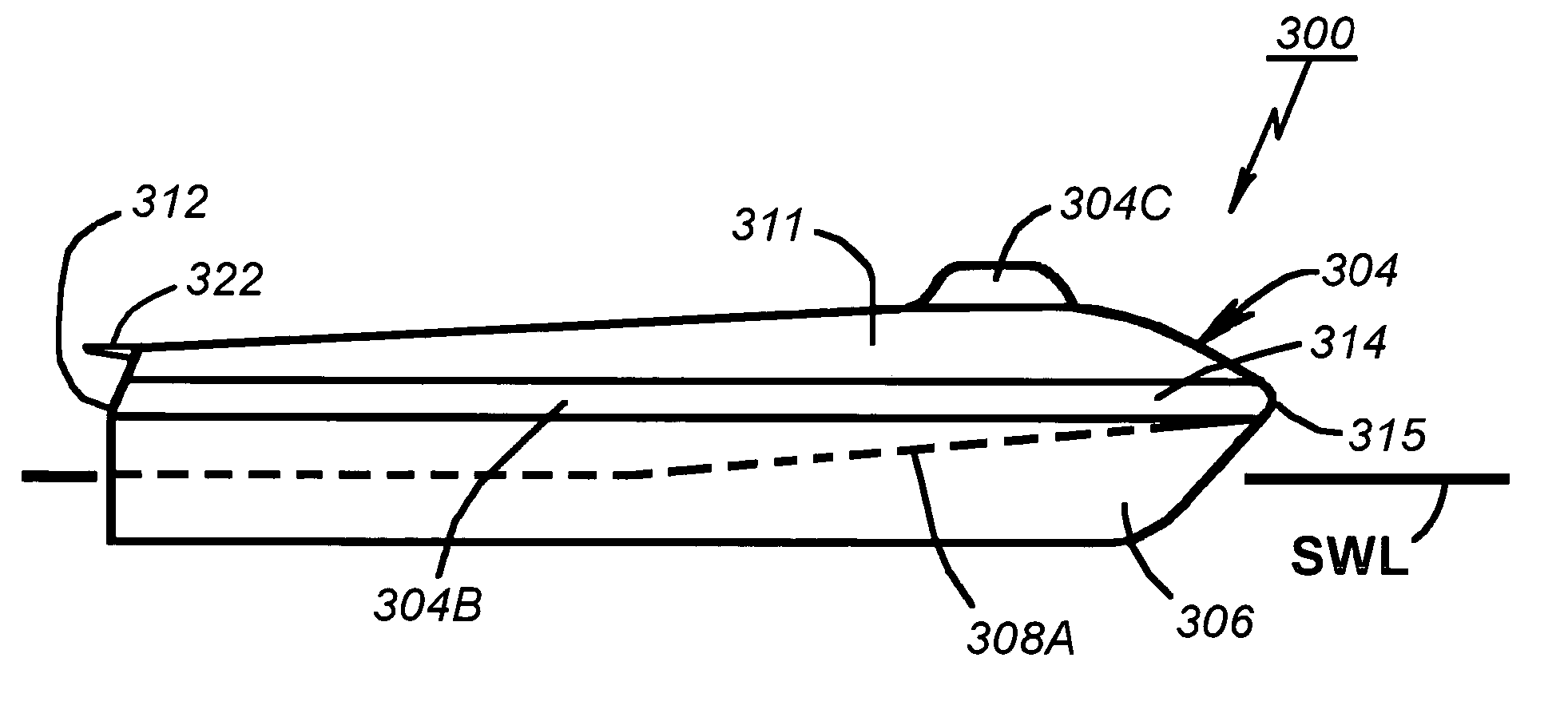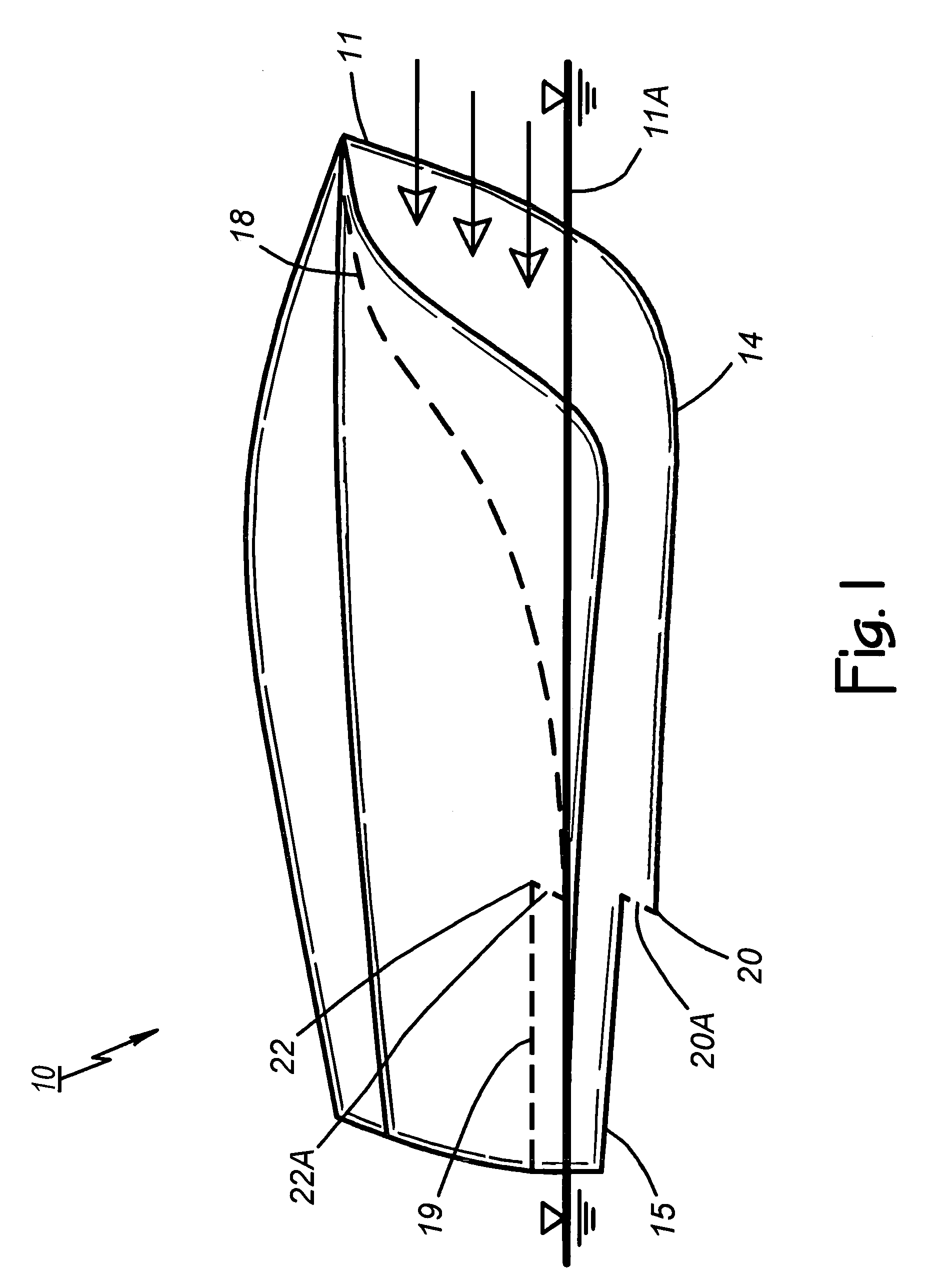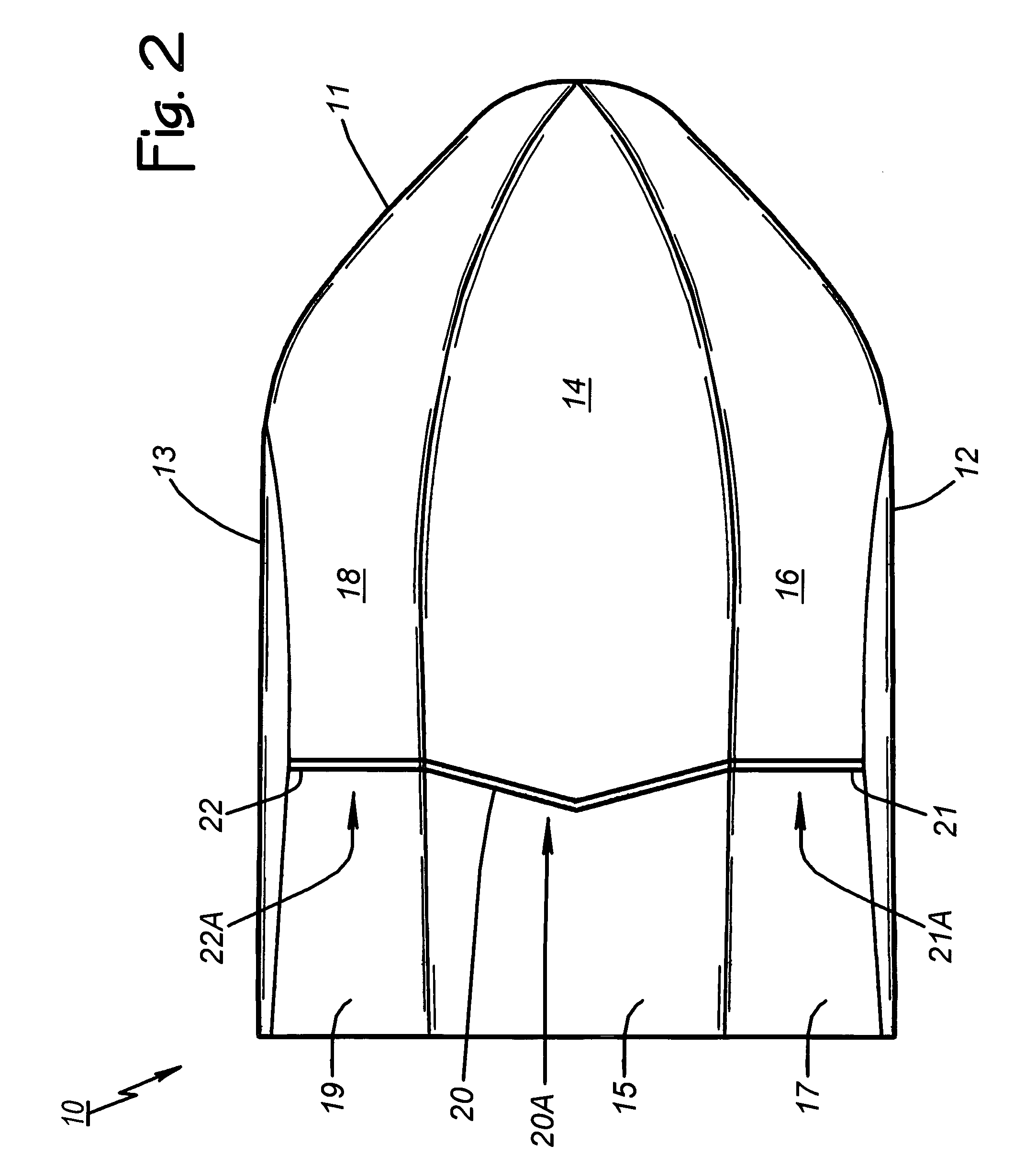Super high speed multi-hull watercraft
a multi-hull, super high-speed technology, applied in special-purpose vessels, vessel construction, transportation and packaging, etc., can solve the problem that the velocity of wind entering the m-hull craft tends to destroy the bow wave spiral, and achieve the effect of maximizing the volume and velocity of incoming air, maximizing the dynamic lift from the impact of entering air, and maximizing the volume and velocity of air
- Summary
- Abstract
- Description
- Claims
- Application Information
AI Technical Summary
Benefits of technology
Problems solved by technology
Method used
Image
Examples
Embodiment Construction
[0034]The description of the preferred embodiment begins with a Powered Watercraft With M-Shaped Hull introductory section of this specification that restates some information presented in U.S. patent application Ser. No. 10 / 625,135 filed Jul. 23, 2003 by the inventors of this patent application (now U.S. Pat. No. 6,868,798 issued Mar. 22, 2005). That background section makes reference to FIGS. 1–9 in describing watercraft having one or more planing surfaces and one or more steps in the planing surfaces at which exhaust is vented.
[0035]Next, information is presented in an Exhaust Proportioning System section of this specification that restates some information presented in U.S. patent application Ser. No. 10 / 957,914 filed Oct. 4, 2004 by the inventors of this patent application. That background section makes reference to FIGS. 10–13 in describing a watercraft having a dual exhaust system with means for controlling the proportions of exhaust vented at steps in the planing surfaces an...
PUM
 Login to View More
Login to View More Abstract
Description
Claims
Application Information
 Login to View More
Login to View More - R&D
- Intellectual Property
- Life Sciences
- Materials
- Tech Scout
- Unparalleled Data Quality
- Higher Quality Content
- 60% Fewer Hallucinations
Browse by: Latest US Patents, China's latest patents, Technical Efficacy Thesaurus, Application Domain, Technology Topic, Popular Technical Reports.
© 2025 PatSnap. All rights reserved.Legal|Privacy policy|Modern Slavery Act Transparency Statement|Sitemap|About US| Contact US: help@patsnap.com



